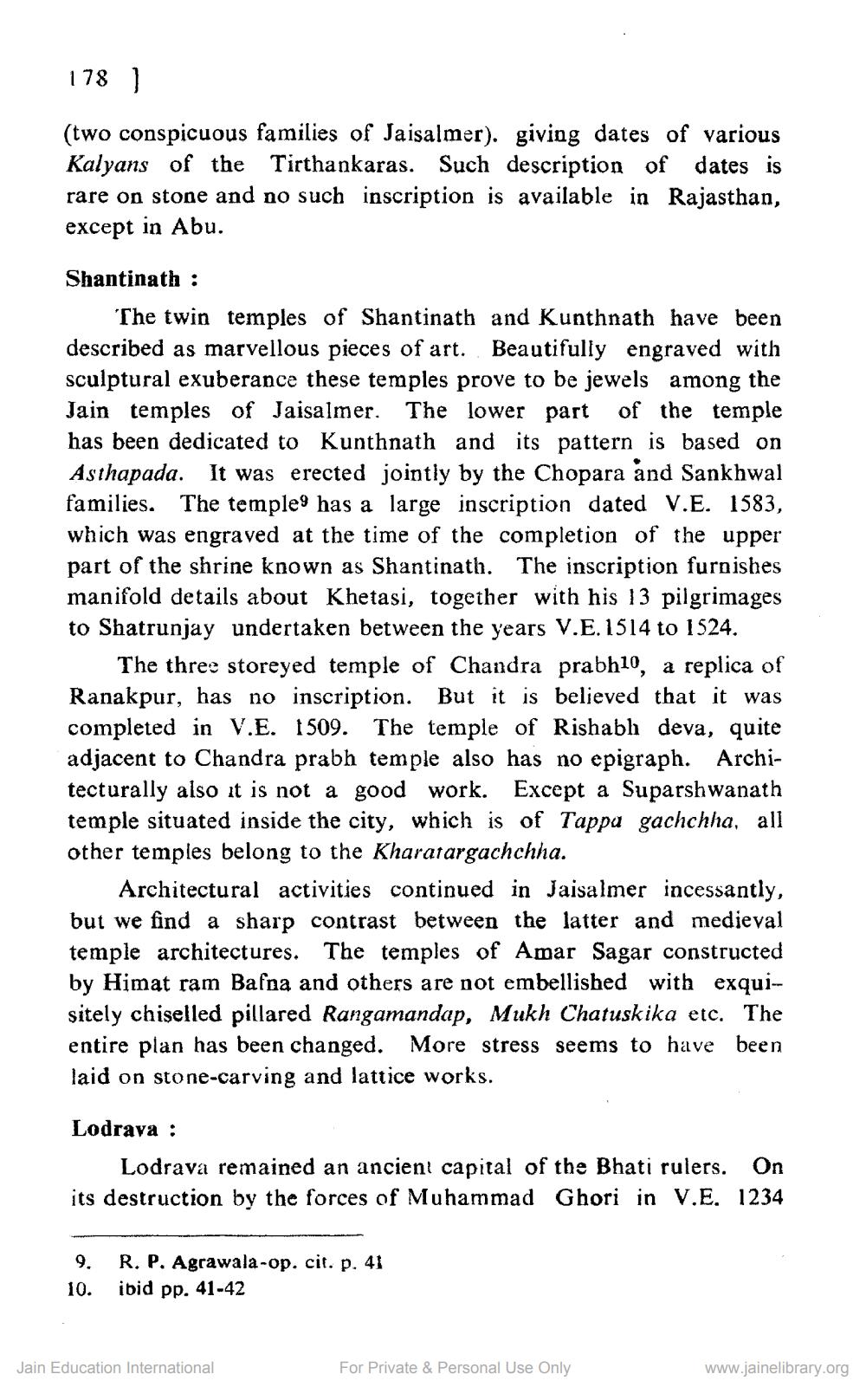________________
178 ]
(two conspicuous families of Jaisalmer). giving dates of various Kalyans of the Tirthankaras. Such description of dates is rare on stone and no such inscription is available in Rajasthan, except in Abu.
Shantinath :
The twin temples of Shantinath and Kunthnath have been described as marvellous pieces of art. Beautifully engraved with sculptural exuberance these temples prove to be jewels among the Jain temples of Jaisalmer. The lower part of the temple has been dedicated to Kunthnath and its pattern is based on Asthapada. It was erected jointly by the Chopara and Sankhwal families. The temple has a large inscription dated V.E. 1583, which was engraved at the time of the completion of the upper part of the shrine known as Shantinath. The inscription furnishes manifold details about Khetasi, together with his 13 pilgrimages to Shatrunjay undertaken between the years V.E. 1514 to 1524.
The three storeyed temple of Chandra prabh10, a replica of Ranakpur, has no inscription. But it is believed that it was completed in V.E. 1509. The temple of Rishabh deva, quite adjacent to Chandra prabh temple also has no epigraph. Architecturally also it is not a good work. Except a Suparshwanath temple situated inside the city, which is of Tappa gachchha, all other temples belong to the Kharatargachchha.
Architectural activities continued in Jaisalmer incessantly, but we find a sharp contrast between the latter and medieval temple architectures. The temples of Amar Sagar constructed by Himat ram Bafna and others are not embellished with exqui-sitely chiselled pillared Rangamandap, Mukh Chatuskika etc. The entire plan has been changed. More stress seems to have been laid on stone-carving and lattice works.
Lodrava :
Lodrava remained an ancient capital of the Bhati rulers. On its destruction by the forces of Muhammad Ghori in V.E. 1234
9.
10.
R. P. Agrawala-op. cit. p. 41 ibid pp. 41-42
Jain Education International
For Private & Personal Use Only
www.jainelibrary.org




